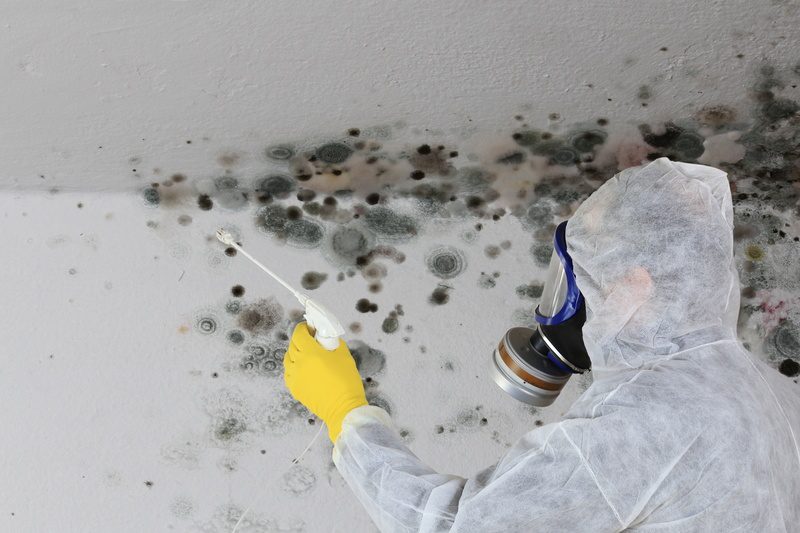
05 Sep 5 Major Steps for Preventing Mold in a Building
5 MAJOR STEPS FOR PREVENTING MOLD IN A BUILDING
They might be super tiny, microscopic organisms that don’t seem to be that dangerous. But when not treated early, mold can be the single worst cause of any building deterioration.
It doesn’t matter whether the materials you used in building your home or commercial space are the best of their kind. Mold can thrive on most surfaces as long as moisture and oxygen are available.
And treating mold is not a cheap undertaking. Depending on the extent of damage, expect to spend around $2,233 to $6,000, according to Home Advisor.
Well, it doesn’t always have to end this way. Before you break your bank to address hefty mold damage in your property, there are ways to prevent it. We summarize them into five crucial steps.
Know the major causes of mold build-up.
Instead of addressing the outcome (which is basically mold damage), you want to address the root cause of the problem. There are many possible causes of mold growth.
However, it is worth noting that mold feeds on moisture. Whenever there is moisture, mold build-up is likely to take place. Below are the major causes of mold damage in any building:
Poor ventilation – poorly ventilated rooms, excessive moisture in the building due to defects, use of gas heaters, and the like makes a great breeding ground for mold. Moving air through proper ventilation is one of the best approaches to preventing mold growth.
Consider using air movers and dehumidifiers across rooms especially when trying to dry wet surfaces like carpets and wood.
Leaks and water damage – disregarding even minor plumbing issues is one of the easiest ways to spark the growth of mold. Regularly check for possible leaks in your plumbing fixtures, especially pipes, toilets, water tanks, and drains.
Basements also contain plumbing parts. If your home or building got serious water damage due to flooding, it can be helpful to seek help from professional water damage inspectors as there are leak sources that may not be visible to your eyes.
Clean and seal surfaces.
Clean existing mold build-up around your building to keep them from spreading. If the area is just small, you can clean it yourself using either DIY solutions like soap + water or water + vinegar mixture or a chemical agent.
However, if the mold build-up seems too large to handle, it’s best to seek professional help. Keeping basements and crawl spaces clean and dry is essential to preventing mold. Clean interior foundation and slab surfaces and then seal them with paint afterward.
Keep water and moisture in check.
A humidity level of 70% makes a perfect environment for mold. You can purchase a humidity meter from your local hardware to easily keep track of the humidity level in your building.
Nonetheless, telltale signs of high humidity include condensation on windows, walls, and pipes. In addition to installing air movers and dehumidifiers, take steps to prevent water infiltration around your building.
After heavy rain, examine your gutters and downspouts for clogs and clean debris. If necessary, install downspout extenders. Furthermore, monitor areas that are susceptible to mold, such as the kitchen, closet, floor around toilets, cabinets near sinks, etc.
Check your building exterior.
Building issues arising from mold build-up usually start in exterior surfaces which are highly exposed to extreme weather conditions such as the roof and walls. Roofing problems such as missing gutters and broken shingles, for instance, are usually the cause of wet basements and crawl spaces.
A certified building inspector can provide you with a detailed report with suggestions and remedies to waterproof your exteriors and ensure that the construction, landscaping, and exterior foundation. Address issues as they occur.
Cracked walls, unsealed windows and leaky roofs should be dealt with immediately. Take note that every building’s needs are not the same. If you see major mold damage, the best thing to do is to call a mold remediation specialist.
Invest in mold-resistant materials.
On your next renovation project, consider using mold-resistant drywall or Sheetrock, paper-faced drywall, solid lumber, sheathing plywood, place board, and mold inhibitors for paints especially in areas where there’s a relatively higher moisture level like bathroom, basement, and kitchen. Bricks make a great building material against mold too but only if it’s done right.
Mold problems are commonplace among residential and commercial buildings. Unavoidable factors like water, flooding, increasing humidity levels, oxygen, and airflow make any building prone to mold build-up and damage.
However, that doesn’t mean there’s nothing you can do to prevent it. There are effective ways to stop mold growth even before they occur and cause you a lot of money on repairs. Of course, it begins with understanding the major causes of mold build-up.
Next are cleaning and sealing surfaces, keeping water and moisture levels in check, waterproofing exteriors, and using mold-resistant materials.